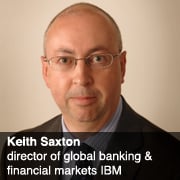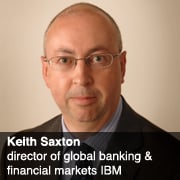Paradoxically, the pace of innovation can accelerate during periods of uncertainty.
On the surface, it would appear that upcoming regulations will have a dampening effect on productivity and innovation, but over the longer term these regulations could, in fact, end up boosting productivity as firms learn to adapt by creating more efficient business processes.
While it may seem obvious that clearing OTC derivatives will mitigate risk—reforms to be brought about under the Dodd-Frank Act—it does take a significant investment to implement change and meet these types of evolving requirements.
“Regulation and innovation have always had a somewhat inverse relationship,” said Richard Baker, chief executive of commodities bourse Cleartrade Exchange. “With increasing regulations and increasing requirements to standardize OTC derivatives, we feel that innovation in capital markets might be stifled in the future.”
When faced with these increased demands, already stretched operations with aging systems can struggle to meet the challenge or look to solutions keeping pace.

“An argument could be made that increased regulatory demands may be hampering innovation and creating additional overheads that reduce productivity,” said Jeremy Skaling, head of product management at technology provider Eagle Investment Systems.
“Over time, however, by forcing institutions to look for new ways of streamlining operations, the regulations may actually spur progress that is similar to how Y2K helped modernize many industries.”
Driven by Necessity
This stress of additional overheads is forcing the industry to search for alternatives to age-old processes and procedures and enhanced solutions for managing the increasing volume of data to meet regulatory demands.
For example, firms are turning to partners to look for opportunities to enhance systems and also provide additional services and support. They are increasing productivity and looking for innovation in new platforms such as cloud offerings to redefine operating models.
“Innovation thrives in volatile, changing environments,” said Steve Engdahl, senior vice-president of product strategy at GoldenSource, a software provider. “With regulation and market dynamics, the capital markets are a very volatile environment at the moment.”
The simplest way to think about productivity is in terms of the human cost. With margins down globally, there is very little scope to add to the overall headcount, particularly in IT.
“Every developer-hour spent retrofitting a system to handle a new regulatory requirement, or every man-hour spent responding to an ad-hoc regulatory request, is an hour not spent on something productive to the firm or capital markets in general,” said Kirk Wylie, chief executive of OpenGamma, a risk management technology provider.
Those firms that are able to innovate technologically to address regulatory requirements will benefit the most from upcoming changes in the market.
“Capital markets are a surprisingly innovative place,” said Joshua Walsky, chief technology officer at Broadway Technology, a provider of trading solutions. “There is innovation in two directions: the first is in the financial products and trading ideas themselves and the second is in the technology to bring those to market.”
Regulations that limit or eliminate certain types of trading activities and impact market dynamics will spark innovation of trading ideas that capitalize on the nuances of the new electronic markets created in the wake of the Dodd-Frank Act, a major reform of the U.S. financial services landscape.
Point of No Return
Similarly, regulatory changes will require more from technology to uphold and enforce their requirements. These market changes and new technological demands could be the inspiration for innovation.
“A 'point of no return' has been reached in the industry that demands a fundamental transformation of banks' business and operating models,” said Keith Saxton, director of global banking and financial markets at computer services group IBM.
Multiple complex regulations represent catalysts to this transformation process.
Significant improvements in data and processes can lead to productivity improvements across the trade lifecycle, offering significant savings for banks.
“Innovation will be much less about the 'product' and much more about the 'process' and 'customer experience’,” Saxton said. “This is where banks can learn from best practices in other industries—for example, supply chain in automotive, go-to market processes in pharma and customer experiences in retail and social media.”
Engdahl of GoldenSource added: “While regulatory changes are closing down some of the traditional avenues to making money, they may be opening up new opportunities and new business models which weren’t viable before. While it may be too early to make a call on how this impacts productivity, it’s safe to say that we can look forward to much more innovation from financial services firms and from their suppliers.”
Private cloud computing and private cloud infrastructure services represent a promising avenue for combating regulatory costs.
“Hedge fund managers, broker/dealers and banks are all beginning to shift more of their business technology on to a common infrastructure; what we call the private financial cloud,” said Nigel Kneafsey, chief executive at Options IT, a technology provider.
“The upside for them is being able to manage the costs associated with complying with new regulations as the platform service provider can distribute compliance costs across a broader user base.”
The private cloud platform is also better positioned to provide security and scalability to the end user at a lower cost than if they were to build it out themselves.
“In our view, the aggregation of resources at the platform level is one of the primary trends driving efficiencies among capital markets firms today,” said Kneafsey.
As the frequency of risk reporting has speeded up, from end of day to intraday, and to real-time or near real-time, so has the need for gathering and analyzing data.
The focus in the last couple of years has shifted from pure trading speed to gaining intraday views of a firm’s risk position, which can fluctuate rapidly during the course of a trading day.
Firms need to implement risk management processes, “including dynamic pre-trade, at-trade and post-trade controls to meet the global requirements of new and pending regulations”, said Steve Woodyatt, chief executive of Object Trading, a provider of direct market access. “They need to efficiently monitor and manage risk across multiple asset classes and global trading venues from a central point of awareness and control in real time.”














